Today Current Affairs: 19th August 2022 for UPSC IAS exams, State PSC exams, SSC CGL, State SSC, RRB, Railways, Banking Exam & IBPS, etc
Table of Contents
Manthan Portal:
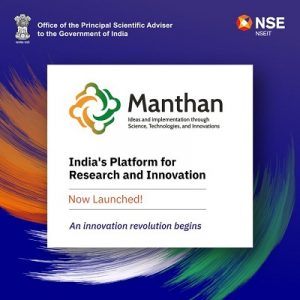
It has been launched by the Office of the Principal Scientific Adviser for promoting collaboration between industry and the Scientific research and development ecosystem to meet India’s sustainability goals.
- Programmes: Knowledge Transfer, Interactive sessions, exhibitions on new innovations
- Platform is powered by NSEIT subsidiary of the National Stock Exchange of India
- Principal Scientific Adviser (PSA) is the chief advisor to the government on matters related to scientific policy and holds a secretary-level position.
- ‘Office of the Principal Scientific Adviser’, through the PM’s Science, Technology and Innovation Advisory Council (PM-STIAC)helps scientific cross-sectoral synergy across ministries, institutions and the industry.
- 1st PSA was P. J. Abdul Kalam (1999-2002)
- Bureau of Police Research and Development (BPR&D), in coordination with the All-India Council for Technical Education (AICTE), launched an online hackathon “Manthan 2021” (for a technical solution to challenges faced by intelligence agencies)
Arth Ganga:
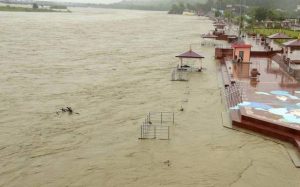
Jal Shakti Ministry unveiled a new initiative under Arth Ganga (under Namami Gange Programme)
- Arth Ganga aims to promote economic activities along the Ganga River bank
The new initiatives are:
- Jalaj initiative (Skill enhancement along with Ganga Conservation)
- Sahakar Bharati (sustainable economic development by public participation)
- ImAvatar (promotes livelihood opportunities)
- New course ‘River Champ’ on CLAP: The continuous learning and activity portal (CLAP) is an online platform for raising awareness, actions and debates around river conservation in India.
Air Quality And Health In Cities:
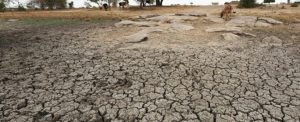
A report was released titled Air Quality and Health in Cities, which analysed pollution and global health effects for more than 7,000 cities around the world between 2010 and 2019.
- The study ranked cities on the basis of two major air pollutants found — fine Particulate Matter (PM2.5) and Nitrogen Dioxide (NO2).
Findings:
PM 2.5 Levels:
- Delhi and Kolkata are ranked first and second in the list of top 10 most polluted cities when PM 2.5 levels were compared.
- PM 2.5 is an atmospheric particulate matter of diameter of fewer than 2.5 micrometres, which is around 3% the diameter of a human hair.
- It causes respiratory problems and reduces visibility.
- While exposures to PM 2.5 pollution tend to be higher in cities located in low- and middle-income countries, exposure to NO2 is high across cities in high-income as well as low- and middle-income countries.
NO2 Levels:
- No Indian city appeared in the list of top 10 or even top 20 polluted cities when NO2 levels were compared.
- Average NO2 levels for Delhi, Kolkata and Mumbai, according to the report, ranged from 20-30 µg/m3.
- This list saw Shanghai at the top with an average annual exposure of 41 µg/m3.
- NO2 comes mainly from the burning of fuels in older vehicles, power plants, industrial facilities and residential cooking and heating.
- As city residents tend to live closer to busy roads with dense traffic, they are often exposed to higher NO2 pollution than residents of rural areas.
- Other cities with high NO2 population levels included Moscow, Beijing, Paris, Istanbul and Seoul.
Death Burden:
- Beijing had the largest disease burden associated with a PM 2.5-related illness, with 124 attributable fatalities per 100,000 persons.
- Five Chinese cities were in the top 20.
- Delhi came in 6th, with 106 deaths per 100,000 and Kolkata at 8th with 99 deaths.
Causes:
- Only 117 nations currently have ground-level monitoring systems to track PM 2.5, and only 74 nations are monitoring NO2 levels.
- In 2019, exposure to pollutants in 86% of the more than 7,000 cities exceeded WHO’s standard, therefore, impacting around 2.6 billion people.
Governing Council Meeting Of NITI Aayog:
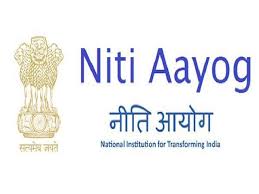
The Prime Minister chaired the seventh meeting of the Governing Council (GC) of NITI Aayog.
Key Agenda:
- Crop diversification and achieving self-sufficiency in pulses, oilseeds and other agri-commodities
- Implementation of National Education Policy (NEP) in school Education,
- Implementation of National Education Policy in higher education, and
- Urban governance.
PM’s Address:
- Every State played a crucial role according to its strength and contributed to India’s fight against Covid-19, leading India to emerge as an example for the developing nations to look up to as a global leader.
- Each state should focus on promoting its 3Ts, Trade, Tourism, Technology, through every Indian Mission around the world.
NITI Aayog’s Governing Council:
- It is the premier body trusted with developing a shared vision of national priorities and strategies with the active involvement of States and Union Territories.
- It is a platform to discuss inter-sectoral, inter-departmental and federal issues.
- It comprises:
- The Prime Minister of India.
- Chief Ministers of all the states and union territories with the legislature.
- Lt Governors of other UTs.
- Ex-Officio Members, Vice Chairman, NITI Aayog, Full-Time Members, NITI Aayog.
- Special Invitees.
Traditional Knowledge Digital Library (TKDL):

The Cabinet has approved the “Widening access of the Traditional Knowledge Digital Library (TKDL) database to users, besides patent offices”.
- The opening up of the TKDL is also envisaged to inculcate thought and knowledge leadership through Bharatiya Gnana Parampara, under the New Education Policy 2020.
- The Traditional Knowledge Digital Library (TKDL) is a prior art database of Indian traditional knowledge established in 2001, jointly by the Council of Scientific and Industrial Research (CSIR) and Department of Indian Systems of Medicine and Homeopathy (ISM&H, now Ministry of AYUSH).
- The TKDL is a first of its kind globally and has been serving as an exemplary model to other nations. The TKDL currently contains information from existing literature related to ISM such as Ayurveda, Unani, Siddha, Sowa Rigpa and Yoga.
- The information is documented in a digitized format in five international languages which are English, German, French, Japanese and Spanish.
Interest Subvention On Short Term Agriculture Loans:
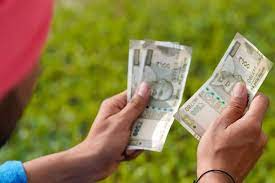
The Union Cabinet has approved to restore Interest Subvention on short term agriculture loans to 1.5% for all financial institutions.
- Thus, Interest Subvention of 1.5% will be provided to lending institutions (Public Sector Banks, Private Sector Bank, Small Finance Banks, Regional Rural Banks, Cooperative Banks and Computerized PACS directly ceded with commercial banks) for the financial year 2022-23 to 2024-25 for lending short term agri-loans upto Rs 3 lakh to the farmers.
- This increase in Interest Subvention support requires additional budgetary provisions of Rs 34,856 crore for the period of 2022-23 to 2024-25 under the scheme.
- Increase in Interest Subvention will ensure sustainability of credit flow in the agriculture sector as well as ensure financial health and viability of the lending institutions especially Regional Rural Banks & Cooperative Banks, ensuring adequate agriculture credit in rural economy.
Panch Pran:

In his Independence Day address, Prime Minister Narendra Modi asked Indians to embrace the “Panch Pran” — five vows — by 2047 when the country celebrates 100 years of independence. The first vow, he said, is for India to become a developed country in the next 25 years.
- NTPC is steadily lowering its carbon footprint by reducing greenhouse gas emissions through the installation of renewable energy projects in its existing stations as well as putting up green field RE projects.
- The Company has planned 262 MW floating solar on over 1300 acres of its reservoir area by installing over 9,50,000 PV modules at its various stations out of which 242 Mega Watt has been commissioned.
- This includes the country’s largest floating solar of 100 MW at Ramagundam in Telangana, 92 MW at Kayamkulam in Kerala, and 25 MW each at Simhadri, Andhra Pradesh, and Kawas in Gujarat.
Namaste Scheme:
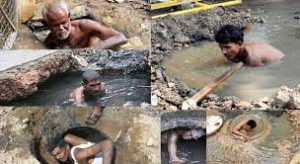
Namaste is a Central Sector Scheme of the Ministry of Social Justice and Empowerment (MoSJE) as a joint initiative of the MoSJE and the Ministry of Housing and Urban Affairs (MoHUA).
NAMASTE aims to achieve the following outcomes:
- Zero fatalities in sanitation work in India
- All sanitation work is performed by skilled workers
- No sanitation workers come in direct contact with human faecal matter
- Sanitation workers are collectivized into SHGs and are empowered to run sanitation enterprises
- All Sewer and Septic tank sanitation workers (SSWs) have access to alternative livelihoods
- Strengthened supervisory and monitoring systems at national, state and ULB levels to ensure enforcement and monitoring of safe sanitation work
- Increased awareness amongst sanitation services seekers (individuals and institutions) to seek services from registered and skilled sanitation workers
Human-To-Animal Transmission Of Monkeypox:
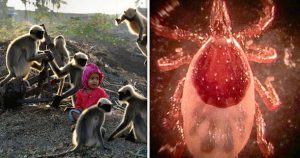
The first case of human-to-animal transmission of monkeypox has been reported in a dog, according to research published in the medical journal The Lancet on August 10.
- Following the news, the United States public health agency, the Centres for Disease Control (CDC) and Prevention, has updated its prevention recommendations on infected persons having pets at home.
- The infected dog showed symptoms such as lesions on the skin, specifically “mucocutaneous lesions, including abdomen pustules and a thin anal ulceration”.
- It is unclear right now if dogs can further spread the disease to other dogs or humans.
Kawas Solar PV Project:
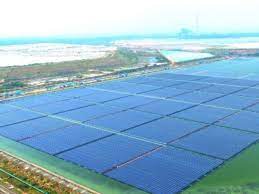
NTPC Limited, India’s largest integrated energy company achieved 69454 MW of group installed and commercial capacity with the commissioning of 56 MW Kawas Solar PV Project at NTPC Kawas, Gujarat.
- NTPC is steadily lowering its carbon footprint by reducing greenhouse gas emissions through the installation of renewable energy projects in its existing stations as well as putting up green field RE projects.
- The Company has planned 262 MW floating solar on over 1300 acres of its reservoir area by installing over 9,50,000 PV modules at its various stations out of which 242 Mega Watt has been commissioned.
- This includes the country’s largest floating solar of 100 MW at Ramagundam in Telangana, 92 MW at Kayamkulam in Kerala, and 25 MW each at Simhadri, Andhra Pradesh, and Kawas in Gujarat.




